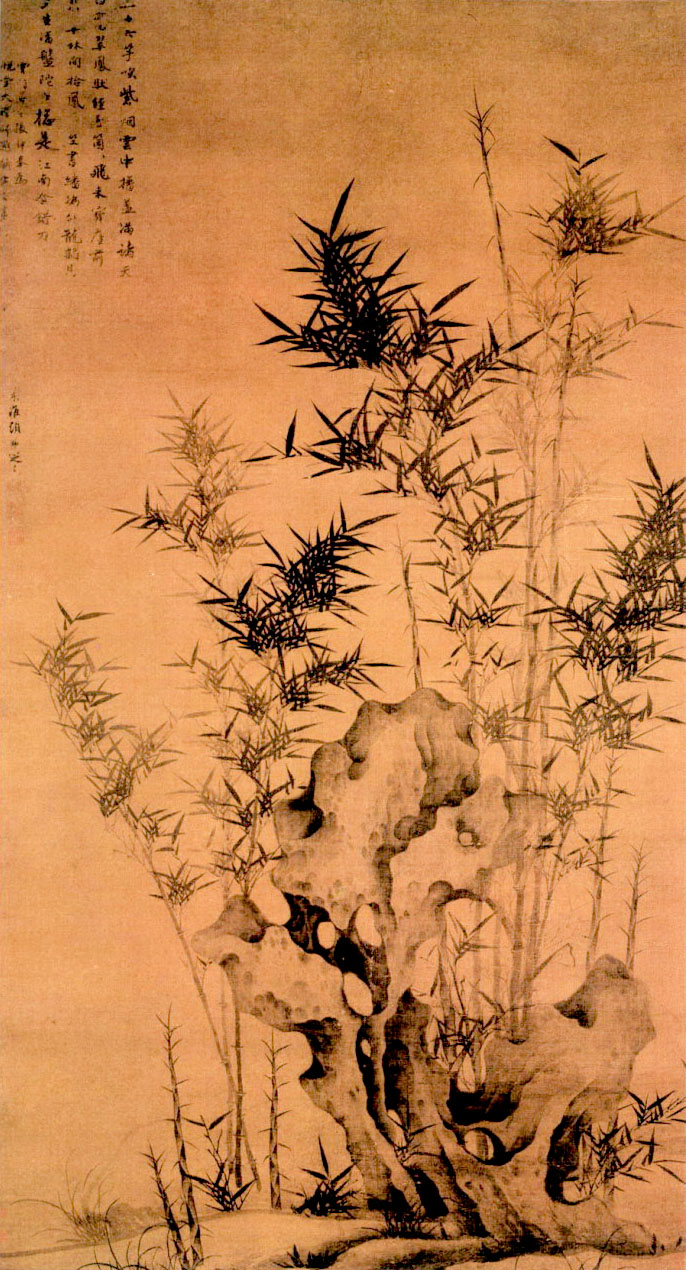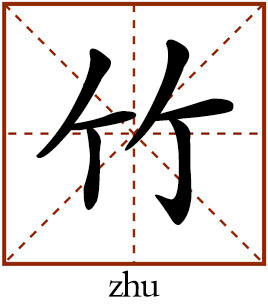Zhu’s image in Chinese culture

A painting of bamboo and rock by Gu An (1289-c.1365) in thw Yuan Dynasty stored in Palace Museum in Taipei

Zhu (bamboo), a member of the “four gentlemen flowers,” represents many good virtues that a gentleman pursues in Chinese culture, including perseverance, integrity, uprightness and strong will.
Bamboo, or “zhu” in Chinese, is considered a member of the “four gentlemen flowers,” together with mei (plum flowers), lan (orchids) and ju (chrysanthemum). Zhu is also seen as one of three friends who one can associate with in the chilly winter, together with song (pine trees) and mei.
Chinese people admire zhu for the virtues that it represents. A bamboo has many joints called “jie.” The Chinese character “jie” also means moral integrity or courage in the face of difficult situations. Zhu symbolizes “being upright,” carrying a cultural connotation similar to the passage Ernest Hemingway once wrote: “A man can be destroyed but not defeated.”
Zhu is hollow, or “xu xin” which literally means “empty-hearted.” Because “xu xin” also means “modest,” zhu became a symbol of modesty in Chinese culture.
For Chinese literati and intellectuals, zhu is not a common plant, for it represents many good virtues that a gentleman pursues. The dancing and upright image of zhu is a symbol of the unrestrained manner and attitude. Zhu stands upright in difficult situations as piercingly chilly frost and snow represents strong will and perseverance. Zhu lives a simple and unadorned life, which represents the rectitude and uprightness of a virtuous person.
The history of anthropomorphizing zhu and considering it a symbol of a virtuous person dates back to the pre-Qin Period. The Book of Rites said that “The rules of propriety serve as instruments to form men’s characters…They are to a man what their outer coating is to bamboo, and what its heart is to a pine or cypress. These two are the best of all the productions of the (plant) world. They endure through all the four seasons, without altering a branch or changing a leaf.”
Bamboo remains green through all the four seasons and the pines and cypresses endure through the piercing chilliness. They are both symbols of noble virtue. The Book of Rites anthropomorphized the bamboo, pine and cypress and believed them two be the best of all productions of the plant world, laying a cultural foundation for the saying “three durable plants of winter” or the “three friends that one could associate with even in difficult times.”
The Book of Songs said “Behold the bay beside the Qi River, so much young bamboo you see. My lord is elegant and wise, as smooth as ivory neatly made, as carefully polished as jade.”
This song was believed to an ode to the Wu Lord of the Wei Kingdom, appreciating his good virtues, great learning and gifts. Bamboo was a metaphorical expression of all these virtues.
In addition to this, another song also drew parallels between bamboo and pine trees, saying “[Ceaseless water flows the small rill; verdant plants rise on the South Hill.] Lush bamboo is growing there; Green towering pine trees are there.” The last two verses are now quoted as a metaphor for the prosperity of the family.
For example, Chinese President Xi Jinping quoted these verses on the 20th anniversary of Hong Kong’s return to the motherland on July 1 last year as a metaphor that Hong Kong Special Administrative Region has grown exuberant like a stick of bamboo or a pine tree.
Chuang Tzu (369-c.286 BCE), a leading figure of Taoist philosophy, also contributed to the cultural significance of zhu in China. Chuang Tzu wrote that “Do you know a kind of bird in the south, by the name of yuanchu? It set out from the South Sea and flew toward the North Sea. It rested only on the parasol trees, ate only the bamboo fruit and drank only the sweet water from the spring.”
Yuanchu was a divine bird like the phoenix. It ate only the fruit of bamboo, which naturally made bamboo fruit a noble type of food. Hence, bamboo became divine and unsullied objects connected to the noble phoenix. Bamboo that attracts the phoenix became an image of a person of virtue in Chinese culture.
